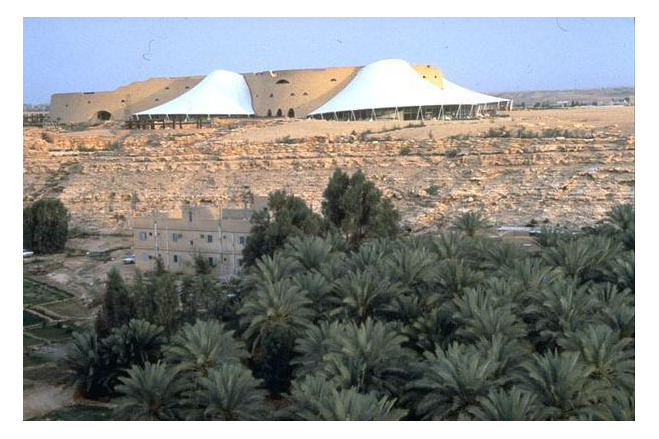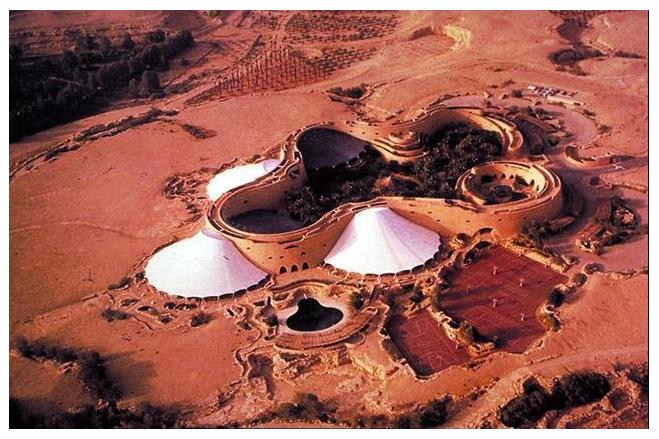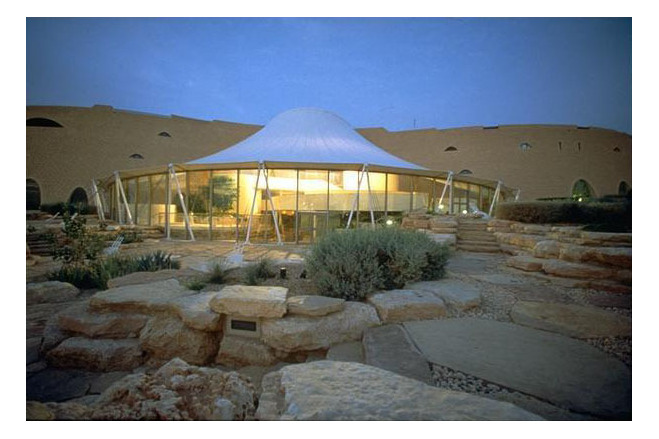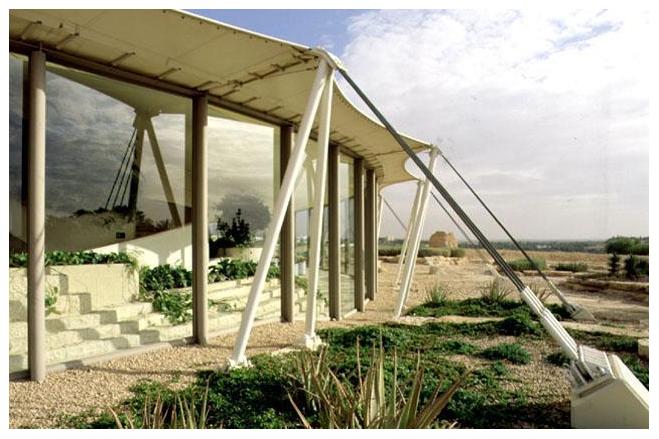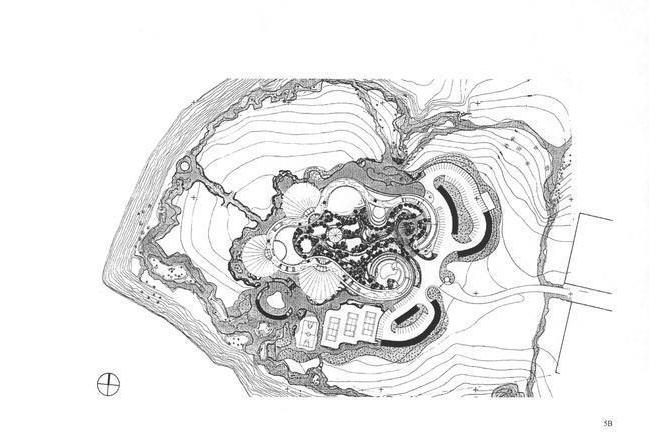tuwaiq Palace
General information
-
Home page
http://www.omrania.com.sa/projects/tuwaiq.htm
-
Location address
Riyadh
-
Location country
Saudi arabia
-
Year of construction
1985
- Function of building
-
Degree of enclosure
Fully enclosed structure
-
Climatic zone
Arid - dry and hot all year
-
Primary function of the tensile structure
- Space defining elements
Description
The tuwaiq Palace, initially designed as the Diplomatic Club, is a response to the unique opportunities presented by the site in the Diplomatic Quarter, a design worthy of the majestic promontory site overlooking the sweeping Wadi Hanifeh below. At the heart of the concept is the need for physical protection from the environment in contrast to the desire to view the unique panorama available from the site. The concept became one of a series of contrasts: light and heavy, garden and desert, modern and traditional technology, openness and solidity. Statistically, the tuwaiq Palace which was originally designed as a club for the Diplomatic Community contains 24,000 m.sq. of recreational, social, dining, banqueting, conference and accommodation functions. Such diverse functions as a tenpin bowling alley, creche, billiards, library, secretariates and hotel rooms are combined with the usual club facilities of swimming, tennis, squash, sauna, exercise, lounges, social rooms and formal and informal dining. All technical, mechanical and staff-related functions to support such a facility are included within the Palace. Project was awarded after winning a limited design competition.
Description of the environmental conditions
'The Tuwaiq Palace hosts government functions, state receptions, and cultural festivals that introduce Saudi arts and customs to the international community, and vice versa. The building is enclosed by inclined curved walls, forming a sinuous curvilinear spine 800 m long, 12 m high, and 7-13 m wide, used for guest services and accommodations. It encloses outdoor sports facilities, gardens, and extensive landscaping laid out in a pattern of complementary spirals, circles, and curves, in harmony with the building's undulations. Mushrooming from the spine are tents supported by tensile-structure technology. The tents enclose the large-scale spaces: main lounges, reception areas, multi-purpose halls, restaurants, and a café. The landscape plan provides a dramatic contrast between the lush greenery of the outdoor spaces enclosed by the spine and the arid rocky plateau beyond its walls. Taken as a whole, the design makes reference to two local archetypes - the fortress and the tent - and reproduces the natural phenomenon of oases. Reinforced concrete, and steel masts and cables, comprise the basic structural materials of the building. The white tents are made of Teflon-coated, woven fibre fabric. Those facing the garden are of cable nets coated with custom-made, glazed blue ceramic tiles fastened to timber battens. The tents are enclosed by glass walls. The jury commended the building for its "architectural qualities and its setting within a dramatic landscape, the idea of a soft fortification, its hard and soft spaces, and its combination of concrete, stone, tensile structures, and landscaping.' ©The Aga Khan Award for Architecture
Material of the cover
-
Cable-net/Fabric/Hybrid/Foil
Fabric
-
Material Fabric/Foil
Glasfabric
-
Material coating
PTFE
Main dimensions and form
-
Form single element
Anticlastic
Duration of use
-
Temporary or permanent structure
Permanent
Involved companies
-
Architects
Omrania
Atelier Frei Otto
-
Engineers
Buro Happold
Editor
-
Editor
Marijke M. Mollaert



